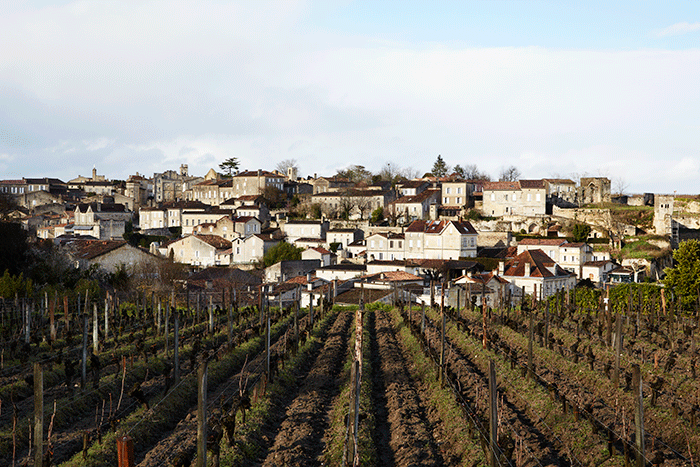Buying Bordeaux’s Petits Châteaux
Author: Philip Moulin
Buying for Bordeaux is unlike most other regions. Where, for example, our Italian buyer David Berry Green might go and seek out small, independent producers directly – you don’t tend to do that in Bordeaux. Generally speaking the way the Bordeaux trade works is very old fashioned – the most illustrious châteaux, the Cru Classé, don’t want to sully themselves with money, and they deal with a middle man called a ‘courtier’ who takes a percentage of every transaction. A château will instruct the courtier as to how many cases it wants released onto the market, then the courtier goes to a négociant (the real merchants in Bordeaux) to say how many cases they may have. We then deal with the négociant.
There are a hundreds and hundreds of petits châteaux. It’s easy to forget what a huge wine producing area Bordeaux is – as an appellation, it produces more wine than the whole of Australia. These petits châteaux can struggle to make their voices heard on the market.
The petits châteaux wines are direct competition with the likes of Côtes du Rhône, Australian Shiraz and New Zealand Pinot Noir and, contrary to preconceptions, are not always easy for négociant to sell (although unfortunately this doesn’t necessarily reflect in the prices). So, really, there is a lot out there – but finding the decent stuff from a good appellation means sifting the wheat from the chaff.
It’s a crowded market at the moment, and I am seeing prices for the good vintages such as ’09 and ’10 go through the roof – everyone is buying up and holding on to large stock. Vintages such as ’11 and ’12 are being left behind, and prices are quite depressed: they don’t have the fruit concentration of ’09 or the power and structure of ’10.
We occasionally come across a new, exciting negociant. In the past few months, I’ve started working with a fantastic one-man-band: a négociant whose soul raison d’être is seeking out interesting little petits châteaux and trying to get them on to the market. He has brought us some great wines. One new château we have taken on, Ch. Réaut, was previously owned by a large Champagne company and had had money piled into it; it was then sold on to a co-operative of winemakers. Réaut has all the hallmarks we’re looking for: it had been singled out because of good terroir, had a gorgeous little vineyard and the people behind the wine have real passion.
Like any great French appellation – Châteauneuf-du-Pape, Sancerre, etc – there are certain names you’ll always see on a menu and people always gravitate towards them if they want to impress. But unfortunately there are Bordeaux wines which are not worthy of the appellation. You have to trust the person who put the wine list together, trust your wine merchant, or trust that you know which wines are worth drinking (otherwise you could come a-cropper).
When you taste Bordeaux, the bad wines are instantly awful. Sometimes you know as soon as you pour it – a wine which should be deep purple and bright is already going brown at the rim. In good Bordeaux, however, balance is the overall and guiding thing: if the tannins are in balance with the fruit, the fruit is in balance with the acidity and the whole thing gels and feels harmonious on your palate then we’re on to something.
Red Bordeaux shouldn’t be massive; it shouldn’t be in your face, it shouldn’t have oodles of luscious fruit. It should be restrained – even in hot vintages. It should be refreshing. For me, it’s the best food wine – with enough acidity and tannin to freshen the palate. The tannins should be ripe enough so that there are no hard edges; the wine shouldn’t jar on the palate or make your mouth pucker. It should be fresh and vibrant and have energy and, ultimately, it should make you want another glass of it.
You can’t talk about red Bordeaux winemaking without talking about the Bordeaux blend – that means a blend of Cabernet Sauvignon, Cabernet Franc, Merlot, Petit Verdot and Malbec being the most usual – there are a couple of others you can include. The blend became the norm in Bordeaux because each grape lends a certain characteristic to the wine, be that structure, fruit, potential longevity or spiciness. You’re also balancing your risk in the vineyard as these varieties flower and fruit at different times. Bordeaux is a temperate Maritime climate and is on the cusp of being viable in many years.
White Bordeaux is, in my opinion, one of the great underrated drinks of the world. Usually, it will be a blend of Semillon and Sauvignon Blanc, with the addition of oak ageing for extra complexity. Rather than simply having the one dimensional flavours of Sauvignon Blanc, when blended with Semillon you get much richer, broader flavours – still fresh but with greater depth. It also lends itself very well to food. The greatest whites from the region are among the greatest wines in the world and are stratospherically expensive, but there are plenty within the grasp of you and I which are still fantastic. Overlooked and relatively inexpensively priced, these are noble grape varieties grown by people who really know what they’re doing. It’s one to watch out for.



